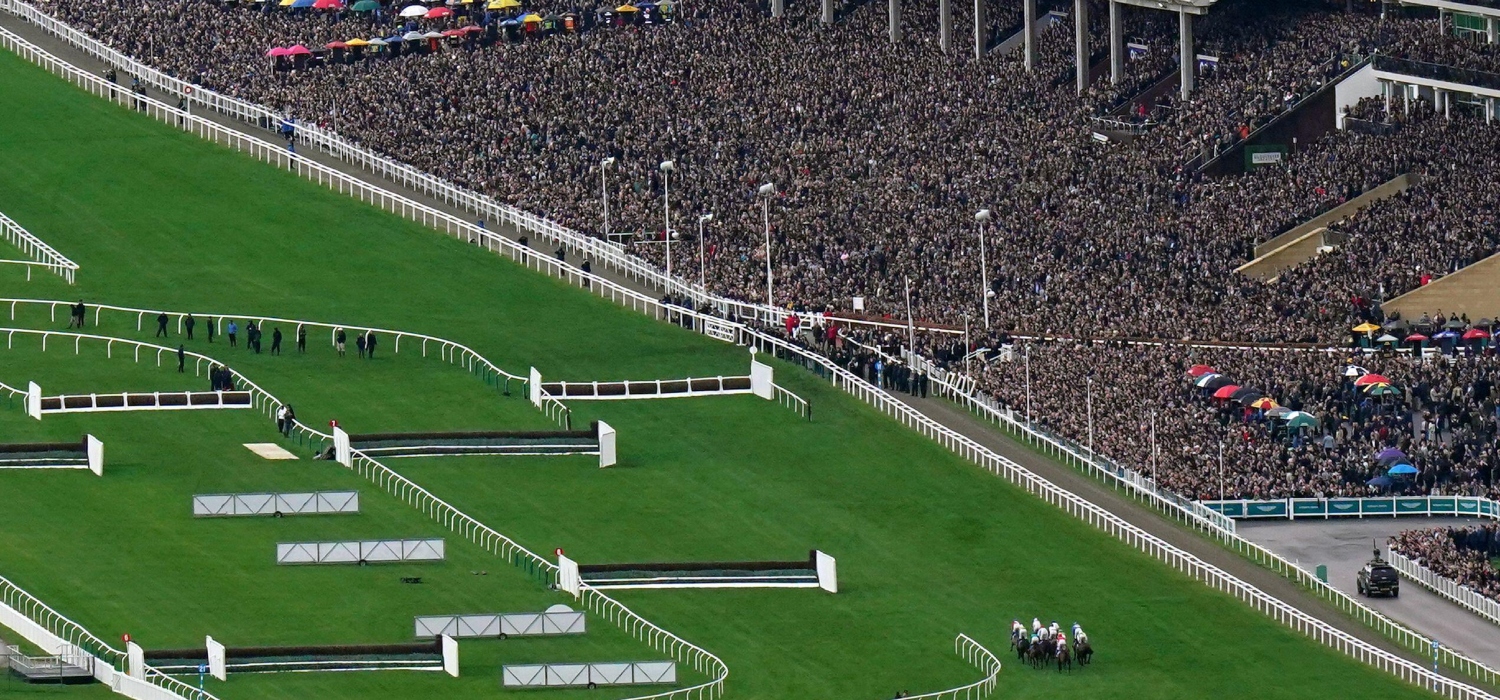
Ahead of the announcement of changes to the Cheltenham Festival, our own Matt Tombs outlines what he would like to see…
Ahead of the announcement of changes to the Cheltenham Festival, our own Matt Tombs outlines what he would like to see, including his new programme…https://t.co/UjbmgjhtOW
— Matchbook Betting Exchange (@TeamMatchbook) April 24, 2024
In any walk of life, every so often, a pivotal moment occurs, and the future is hugely influenced by the reaction to that moment. I think the belated acknowledgement from the racing establishment, including Jockey Club Managing Director Ian Renton, that the Cheltenham Festival programme needs significant change, is such a moment.
At the outset we need to be careful. A repenting sinner always creates joy but the reality is that for many, the repenting is either half-hearted or they aren’t able to stay on the straight and narrow. It’s important to remember that it was Renton who, less than 2 years ago, was trying to sell the sport a 5 day Festival. We mustn’t fall into the trap of thinking that the radical change required will now naturally follow.
Indeed, Renton was quoted in the Racing Post as saying he doesn’t want “drastic changes which might look out of date in 3 years time.” The Festival has constantly evolved and even if every change I’m proposing occurs in 2025, I would never consider them permanent. The programme should be under review after every Festival – almost anything might look out of date in 3 years time.
I may be doing him a disservice but Renton’s comment suggests to me that racing fans need to keep the pressure up to avoid missing the opportunity by ending up with minor tweaks that won’t solve the problem.
Equally we need to be realistic. The ideal scenario of the 2025 Festival reverting to 3 days isn’t going to happen. Whilst you should never forget the best-case scenario, you don’t waste your political capital on it when the chances of it occurring are negligible.
The next best scenario is 4 days and 6 races per day. This is realistic and would make the amended programme much easier to design. There will always be some who understand the price of everything but the value of nothing – who would demand a 1/7th reduction in ticket prices etc – but I believe that we can win the argument that fewer races, which are more competitive, provides better value for your entrance fee.
However, I think it’s tactically better to see that as the next phase and accept 28 races for 2025. Renton has, rather cleverly, said that the responses to the 5 day Festival consultation showed that racing fans want 7 race cards, (Renton was proposing 6 races on each of the 5 days.) In reality, many made that argument on the basis that even Renton didn’t believe in a 35 race Festival and so 7 races per day made 5 days impossible. We need to avoid getting bogged down in such arguments in the short term.
Equally, we need to ensure we don’t get trapped in a quagmire by saying nothing can be done until the pattern as a whole is considered. The Cheltenham Festival is dubbed the Olympics of the sport. The wider pattern needs to be amended in light of the changes made to the Festival – those Festival changes must happen first and drive changes to the wider pattern.
Potential Festival Programme Changes
With that in mind, my suggested revisions are set out below. First and foremost, we must get rid of the Turners Novices Chase. This is the race that (by some way) causes the most dilution. We must at all costs avoid the scenario where abolishing or changing the National Hunt Chase is seen as the solution to the novice chase programme.
The Turners would become the old Novices Handicap Chase, which was really competitive and, importantly, was mainly won by small or medium sized yards. It would be a 0-140, (as it was between 2011 and 2017). With the BHA’s revised handicapping method now rating horses lower, (and so more accurately,) 140 rather than 145 is the appropriate ceiling.
The National Hunt Chase would stay but be amended. It too would have a 140 rating ceiling. Penalties would be re-introduced, using the system last used in 2008 – 4lb for a chase win and 7lb for 2 chase wins – which worked well.
The novice / juvenile hurdling programme is less broken. For now the Triumph and Fred Winter would be unchanged. The Dawn Run has, until this year, produced good fields and the argument that mares-only races encourage mares to be put into training is strongest in this race and so it would also remain unchanged.
The Gallagher Novices Hurdle would be converted to a 0-135 handicap, mirroring the changes to the Turners, (the lower ceiling reflecting hurdles ratings being slightly lower in practice.)
I was sceptical about the Albert Bartlett when it was introduced, wondering whether a 3m novice hurdle at the Festival might bottom horses. Such concerns have proved unfounded. Since its introduction in 2005 it has produced 16 winners at the following year’s Festival – no Festival race has produced more. Given that and how competitive the race is, a winning formula shouldn’t be changed so the distance would remain 3m.
The Ryanair would be made back into a Grade 2 with penalties, (4lb for a Class 1 chase win, (including handicaps), 8lb for a Grade 1 chase win,) and a 155 rating ceiling so the best chasers have to contest the Champion Chase or Gold Cup, (the Melling Chase would again be the ‘championship’ race at the intermediate trip.)
The Mares Hurdle and Mares Chase need reforming to stop the dilution of the four championship races. Dinoblue would, on a bare interpretation of her Grade 1 Leopardstown form, have won the Champion Chase had she run in it and Lossiemouth would have added a lot to an uninspiring Champion Hurdle.
Handicaps are one viable option but slight preference is to make them Grade 2s with penalties and ratings ceilings. The penalty systems would be the same as the Ryanair. This would favour the better mares nearer the ratings ceiling, whilst well-handicapped mares that are lower rated could bolster the handicaps.
Mares that had run in an Open Grade 1 or 2 over those obstacles would not be eligible. This would prevent the scenario where the best mares take on the geldings in Open Grade 1s over the winter but not at the Cheltenham Festival.
The ratings ceilings would be 150 (Mares Chase) and 145 (Mares Hurdle). The latter may look low but Lossiemouth was on 147 before winning the International Hurdle and had the ratings ceiling been 150 would probably have been found a soft mares contest as her prep to keep her under the ceiling.
The Cross Country would revert to being a handicap. The nature of the track, shoehorned into the middle of Prestbury Park, means there are few opportunities to gallop until the business end – the slow tempo making it easier to give weight away. Therefore it needs a full 26lb handicap rather than a limited handicap. To allow specialists to be handicapped on their Cross Country form there would not be a rating ceiling but horses that had won a Grade 1 or Grade 2 conditions chase (at any time) would not be eligible.
The Bumper would only be open to 4 and 5 year olds. This would reduce the ‘Appreciate It Problem,’ where an embryonic chaser wins a 4-y-o point, then runs in bumpers the next season, (being 6 at the Festival), novice hurdles the season after and novice chases the season after that. If all goes smoothly, they go into open company over fences and compete as 9-y-o at the Festival. If, like Appreciate It, they have a setback, they are veterans by the time they run in open company over fences at the spring festivals.
In order to bolster the novice conditions races, novices would not be eligible for the (non novice/juvenile) handicaps. Novices have won 53% of the handicaps at the last 5 Festivals, (excluding the Fred Winter and old Novices Handicap Chase), up from 32% in those handicaps this century as a whole.
To prevent trainers winning a novice race and then running the horse minimally afterwards, to be eligible for these handicaps horses would have to have run at least 5 times over those obstacles.
A potential concern would be field sizes. Only 2 of the 8 handicaps, (ignoring the Fred Winter,) had a full field declared this year, (as recently as 2020 every handicap at the Festival had horses balloted out). Had novices not been eligible, the fields, prima facie, of those other 6 handicaps this year would have been, (in chronological order): 17-15-10-14-13-12.
In practice the absence of unexposed novices ought to encourage connections to run more seasoned handicappers – as they would have a much better chance. It would need monitoring but I’d be optimistic that the field sizes would not be materially smaller because novices were excluded and they may well be larger. They would certainly be more competitive.
Over fences, (where the numbers declared are generally lower,) the Ultima would become an Open 4 mile handicap, badged as a Grand National trial, (so there would no longer be 2 handicap chases at 3m-3m2f). Any horse finishing in the first 4 would be guaranteed a run in the National. By ensuring there was always a 4 week gap between Cheltenham and Aintree, and by running the Cheltenham race on the Tuesday – there would be a 32 day gap between the two races.
In order that ‘staying’ handicap chasers had a race, the ratings ceiling in the Kim Muir would be abolished and the distance would be reduced back to around 3m. (An alternative would be to change the Kim Muir into the 4m Grand National Trial but that would mean stopping it being an amateur riders race.)
Finally, I’d experiment by putting specific eligibility conditions in the 2m5f novice handicap hurdle. Of the 14 Grade 1s at the Festival this year, 12 were won by horses that began in point-to-points (5) or French hurdle races (7). These are effectively sales races – 10 of those 12 were sold to current connections after that first race. This is a much more efficient acquisition strategy than the ‘numbers game’ of buying store horses. It has therefore been a big factor in the concentration of so many of the best horses in so few hands.
The 2m5f novice handicap hurdle would therefore be restricted to horses whose first race was under Rules in Britain or Ireland. This would materially increase the chances of smaller yards having a winner at the Festival, without impacting the Grade 1s.
Matt Tombs’ New Cheltenham Festival Programme
My revised programme for 2025 is set out below. I have deliberately not sought to move races around for balance. That may well be a good idea, but again I don’t want to it distract from what’s important – i.e. which 28 races we have:
Tuesday:
- Supreme Novices Hurdle (2m½f)
- Arkle Novices Chase (2m)
- Ultima Grand National Trial Handicap Chase (4m)
- Champion Hurdle (2m½f)
- Mares Hurdle (Grade 2, 0-145) (2m4f)
- Fred Winter Juvenile Handicap Hurdle (2m½f)
- National Hunt Chase (0-140) (3m6f)
Wednesday:
- Gallagher Novices Handicap Hurdle (0-135) (2m5f)
- Broadway Novices Chase (3m½f)
- Coral Cup (Handicap Hurdle) (2m5f)
- Champion Chase (2m)
- Grand Annual Handicap Chase (2m)
- Cross Country Handicap Chase (3m5½f)
- Champion Bumper (4-y-o & 5-y-o) (2m½f)
Thursday:
- Turners Novices Handicap Chase (0-140) (2m4f)
- Pertemps Final (Handicap Hurdle) (3m)
- Ryanair Chase (Grade 2, 0-155) (2m4½f)
- Stayers Hurdle (3m)
- Plate Handicap Chase (2m4½f)
- Dawn Run Mares Novices Hurdle (2m1f)
- Fulke Walwyn Kim Muir Handicap Chase (approx. 3m)
Friday:
- Triumph Hurdle (2m1f)
- County Handicap Hurdle (2m1f)
- Albert Bartlett Novices Hurdle (3m)
- Cheltenham Gold Cup (3m2½f)
- Open Hunters Chase (3m2½f)
- Mares Chase (Grade 2, 0-150) (2m4½f)
- Martin Pipe Conditional Jockeys Handicap Hurdle (0-145) (2m4½f)
Subscribe to the Matchbook Betting Podcast here
Subscribe to the Matchbook YouTube channel here








